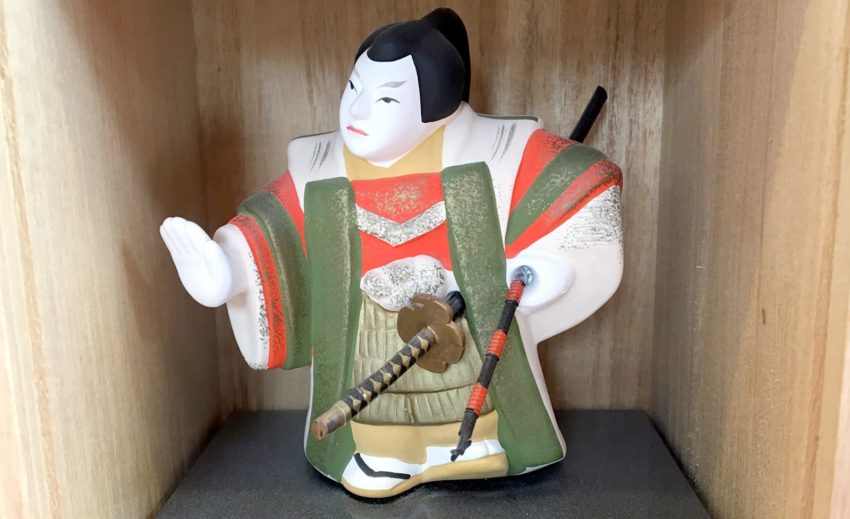Japan, the “Land of the Rising Sun,” holds many golden legends around the sharpness of its blades. Long ago, Tokugawa Ieyasu called the katana the “soul of the samurai warrior.” But the world has learned surprisingly little about what these swords actually are. In fact, katanas weren’t the only swords used during this time period by the samurai warriors. Many others were used, and Japanese sword sharpening is surrounded by a surprising level of mystique.
Making a Sword: A Religious Ceremony
In ancient Japan, making a sword became a form of almost religious ceremony. None were held in higher regard than the swordsmiths of ancient Japan. To give an example, there are even stories of Japanese emperors who made swords, despite the manual labor associated with the craft.
Before making a sword, the swordsmith might purify himself using Shinto rites. This included sexual abstinence and fasting. In some cases, the swordsmith might even undertake a pilgrimage before he began to fashion the blade. Purification rights were performed throughout the process, and women weren’t allowed in the swordsmith’s areas because they were believed to be impure during menstruation. This is the same reason that swordsmiths weren’t allowed to have any contact, of any type, with women during this time. Now that’s dedication!
Given the importance of swordsmithing and Japanese sword sharpening, you have several stories where divine beings helped to construct a sharp and fierce sword.
The Legends of Masamune
Masamune lived as one of the greatest swordsmiths in Japanese history, and while his existence is verified, some of his story has been clouded by legend. For example, consider the infamous tale of Masamune and his student Muramasa. The pupil challenged his master to a Japanese sword sharpening contest. In the challenge, their swords were suspended in water and would cut through items that passed by.
The younger Muramasa’s sword cut everything, from fish to leaves; nothing could escape. Meanwhile, the older and wiser Masamune’s only cut leaves. Masamune looked at his student, impressed with his swordmaking abilities. His student, however, could only scoff and began to laugh at his master’s swordmaking abilities. “Yours only cuts leaves!” he laughed mockingly.
A monk who had witnessed the entire competition came up and declared, “Masamune’s sword is the better one!” He explained that Muramasa had indeed created a great sword, capable of destroying everything in its path. However, that made it bloodthirsty, an evil and destructive blade that killed indiscriminately. It would attack innocent butterflies as well as the heads of enemies. Meanwhile, Masamune’s blade offered a finer choice because it didn’t cut down those who didn’t deserve it.
There’s an alternative to this legend wherein Masamune’s blade cut things, but they were reformed further downstream. There are many Japanese sword legends, and these make clear the vital importance of Japanese sword sharpening skills.
The Togishi, Master Japanese Sword Sharpener
The actual methods involved with Japanese sword sharpening varied from one swordmaker to the next. Most referred to the process of Japanese sword sharpening as “polishing” the katana. The individual who would sharpen the sword wasn’t the swordmaker, however. In fact, the Japanese had a special position for this person; he was called the Togishi.
Japanese sword sharpening began as a formal art in 1192 and continued until 1333. Even today, specialists known as Togishi exist and are heavily regulated and licensed. The Togishi has historically needed even more training than the actual swordsmith. The process of polishing and sharpening a katana blade takes on deeply spiritual undertones.
The Togishi needed to work ten hours per day, and if sharpening the katana in the traditional way would spend 100 hours on a single edge.
How Can Collectors Sharpen Their Katana?
You probably don’t have the time to put in 100 hours sharpening the edge of each of your own katana blades. Luckily, sword enthusiasts have created some shortcuts to make it easier. In addition, many of today’s katana replicas, even finer specimens, don’t require such involved effort because they haven’t even been designed in the same way.
Of course, many collectors don’t have swords as sharp as they would like. Despite the fact that 100 hours might bring out the best in a sword, even three hours spent sharpening and polishing a blade makes a big difference in the beauty and quality of a sword.
Get an Expert, or Sharpen Your Japanese Sword Yourself?
You have two options when it comes to sharpening your katana. You can either choose to have someone else sharpen it, or you can choose to sharpen it on your own. The paid route is self-explanatory, but let’s say that you want to do it the DIY way. The basic technique means your going to need a few basic things:
- 400 to 2000 grit sandpaper
- A block of wood
- Free time
- Good old-fashioned elbow grease
How NOT to Sharpen Your Japanese Blade
First, you have to understand that sharpening a knife is different from sharpening swords. Especially with katanas, you will have to exercise special care when you go to hone the blade. One danger of choosing the DIY route is that you could throw in a lot of money to sharpen the sword but wind up harming the blade because you don’t have the right level of experience. It can be done, but you must be careful.
In general, plan on paying about $10 to $15 per inch for a quality expert service to sharpen a replica katana. In many cases, it may be worth the money to do so. Self-sharpening could lower the value of your sword if you do it incorrectly. One word to beware of with katana sharpeners – a way to test their knowledge – is if they actually promise to “sharpen” your piece. If so, they may not do a great job.
Remember that katana sharpening is more often, and more properly, called, polishing.
Still Want to Sharpen It Yourself?
For DIY Japanese sword sharpening, it may make sense to practice first on a stainless steel replica, because you won’t hurt the value too much. To sharpen a katana using Japanese sword sharpening techniques, you can use automotive dry paper with leather, and slowly polish the blade.
You will also need a sanding paddle, and apply abrasive paper in strokes along the edge of the blade. This can all cost you less than $30, but you should always consider the value of your blade. If the value could be damaged then of course you may want to consider the professional route.
How to Hire Someone to Sharpen Your Katana
As you saw before, wording matters when it comes to sharpening a katana. A real sword sharpener of katanas will call it polishing. If they call it sharpening, they most likely don’t have much experience. (Yes, we are using “sharpening” in this article for convenience’s sake!)
For great, reliable sharpening, you can expect some of the higher-end artisans to charge $60 to $120 per blade inch. For a real Japanese blade, it’s obviously worth the cost. But if you have a $100 replica, it doesn’t make much sense to pay $200 for sharpening because it won’t drastically increase the value. Also, to find a reputable sword sharpener, you may have to ship it out to someone far away. While all this costs more, in many cases you will in fact get better end results.
What exactly can you expect? You can get a feel for the service by asking about the sword sharpener’s techniques. If they don’t sound like they put it through an extensive process, then they also shouldn’t charge as much. However, if they employ traditional Japanese sword sharpening techniques then feels secure in paying the extra cost.
Genuine katana blades can cost tens of thousands of dollars. Not every blade requires a professional sharpener, but it can be worth the cost to hire one in many cases.
A Final Legend: Kotetsu’s Japanese Sword Sharpening Skills
Right from the beginning, the Japanese sword sharpening process began with the creation of the blade. The Japanese blacksmith would repeatedly heat and fold the steel of the blade, and this is what led to a fiercely sharp blade. Weapons became so sharp that they could slice effortlessly through the limbs of unfortunate enemy combatants.
Kotetsu, a Japanese swordmaker, was highly skilled in his processing of iron. In one story, Kotetsu tested his sword on a pine tree. After letting out a combat cry, he swung the sword and cut through a thick branch. Not only was the branch split leanly, but part of Kotetsu’s ishidoro stone lantern had been cut as well!
Sword sharpening, like swords in general, has become an art form in Japan. Any collector who likes Japanese swords should also learn the rich history of the sharpening process. In the samurai days, getting a sharp sword wasn’t merely a practical process but a spiritual form of art. The Togishi who sharpened swords in Japan were some of the most respected members of society.
Whether you make your katana blade sharp yourself, or pay man expert to do it for you, know that you’re carrying on the tradition of Japanese sword sharpening and giving your weapon the proper respect it deserves.

